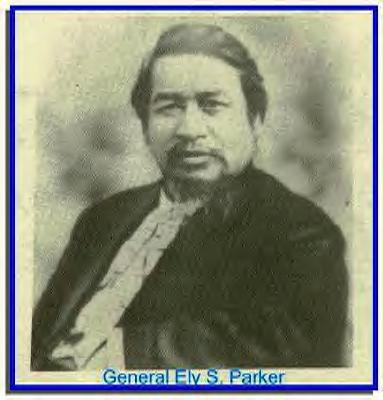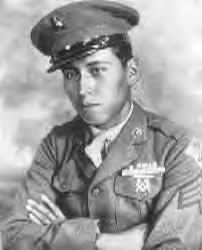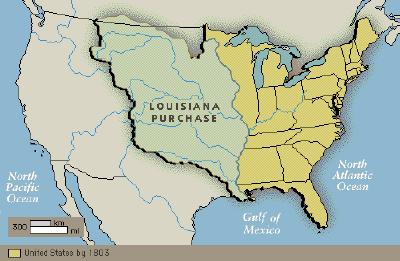|
|
Canku Ota |
|
|
(Many Paths) |
||
|
AN Online Newsletter Celebrating Native America |
||
|
april 21, 2001 - Issue 34 |
||
|
|
||
|
This Date In |
||
|
North American Indian History |
||
|
from On This Date in North American Indian History at http://americanindian.net |
||
| Apr. 21, 1869: | Donehogawa (Ely Samuel Parker) is appointed as the first Indian to be Commissioner of Indian Affairs. Donehogawa, a SENECA IROQUOIS, was trained as a lawyer and a civil engineer. Unable to find work in the white world, Donehogawa contacts his old friend Ulysses Grant. Grant makes him an aide, and they work together through much of the Civil War. Because of his excellent penmanship, Donehogawa draws up the surrender papers for Lee to sign at Appomattox. Promoted to Brigadier General, Ely Parker worked to settle many conflicts between whites and Indians. After Grant becomes President, he will be appointed as Indian Commissioner on this date. |
|
|
|
| Apr. 22, 1978: | Non-Indians are not allowed on the Ft.Hall Reservation as of today. |
| Apr. 23, 1897: | Congress created the Dawes Commission in 1893. One of its primary duties was to bring about to the break up of the reservations in Indian Territory. The method would be to allot individual tribal members a certain amount of land each. The remaining lands would be opened up to white settlers. Today, the commission will reach an agreement with the CHOCTAWs, and the CHICKASAWs to these ends. |
| Apr. 24, 1885: | The Fish Creek fight takes place in Canada. |
| Apr. 25, 1951: | Mitchell Red Cloud gets the Medal of Honor. A HO CHUNK (Winnebago) from Wisconsin, and a Corporal in Company E., 19th Infantry Regiment in Korea. On 5 November 1950, Red Cloud was on a ridge guarding his company command post when he was surprised by Chinese communist forces. He sounded the alarm and stayed in his position firing his automatic rifle at point-blank to check the assault. This gave his company time to consolidate their defenses. After being severely wounded by enemy fire, he refused assistance and continued firing upon the enemy until he was fatally wounded. His heroic action prevented the enemy from overrunning his company's position and gained time for evacuation of the wounded. |
|
Mitchell Red Cloud |
|
| Apr. 26, 1906: | A law is passed which grants the President the right to pick the CHEROKEE Chief. |
| Apr. 27, 1877: | General George Crook contacts Red Cloud with a message for Crazy Horse. Crook promises that if Crazy Horse surrenders, he will get a reservation in the Powder River area. On this date, Red Cloud delivers the message to Crazy Horse. Crazy Horse agrees and heads to Fort Robinson, in northwestern Nebraska, where he will surrender to the U.S.Army. |
| Apr. 28, 1835: | The U.S.government issues orders to stop certifying CREEK land sales. After a year of receiving complaints from CREEKs, and honest whites, the Government also agrees to investigate fraud in previous sales. Numerous scams have developed to get CREEK land. Indians will be paid to represent another Indian in a land sell, or they will be made drunk, and tricked into signing papers. These are just two of the many schemes going on. |
| Apr. 29, 1700: | Lemoyne d'Iberville today visits a PASCAGOULA Indian village, one day's walk from the French post at Biloxi. The PASCAGOULAs have been hit hard by disease brought by the Europeans. |
| Apr. 30, 1598: | Spain claims the PUEBLOs |
|
|
|
| May 1, 1598: | Today, de Soto's expedition reaches the river across from the village of Cofitachequi. Among the high Chiefs who are rowed across the river to meet de Soto, is the "Lady of Cofitachequi". She would be carried on a litter. The "lady" would speak with de Soto, and give him a string of pearls. Eventually, de Soto's men would "liberate" approximately 200 pounds of pearls from a temple in the town. It is believed this village was near present day Silver Bluff, South Carolina. |
| May 2, 1803: | The Louisiana purchase is signed |
|
|
|
| May 3, 1493: | Today through tomorrow, the Pope divides the "new world" between the Spanish and the Portuguese. |
| May 4, 1863: | After the Minnesota uprising of the SANTEE SIOUX, and their subsequent defeat, their lands were forfeited. The surviving Indians, including those who had opposed the uprising and helped the whites, were ordered to be shipped to a reservation in Dakota Territory. On this date, 770 SANTEE SIOUX boarded a steamboat in St. Paul for the journey west. Eventually 1,300 SANTEE SIOUX will be transported to an area which would hardly support life. During the first year, 300 SANTEE would die. |




